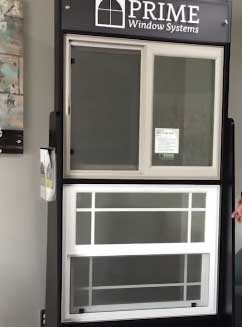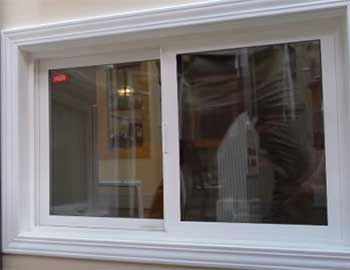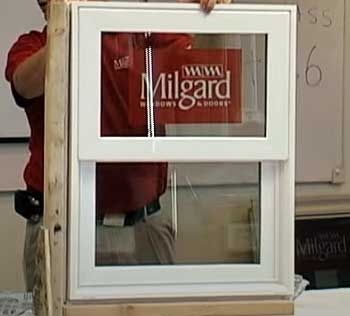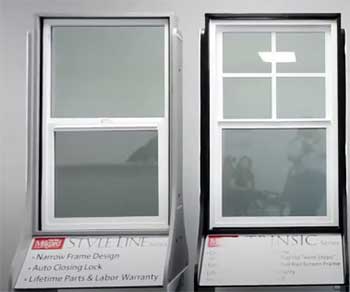If you’re in the market for new windows, two brands you may be considering are Prime windows and Milgard windows. Both companies make high-quality windows designed to improve energy efficiency, comfort, and aesthetics in your home.
But with so many window options on the market, how do you decide which is the better investment for your needs and budget?
In this comprehensive guide, we’ll compare Prime and Milgard windows to highlight the pros and cons of each brand. Key factors we’ll analyze include:
- Efficiency and performance
- Materials and construction quality
- Cost and warranties
- Appearance and customization
- Company reputation and customer reviews
Reviewing these key categories will help you determine whether Prime or Milgard is the superior choice for your next window replacement or installation project.
A Brief Comparison Table
Milgard and Prime windows are both exceptional products in similar tier categories pushing peak innovation in modern fenestration. Comparing core factors, the contrast looks like:
| Category | Milgard | Prime |
| Thermal & Acoustic Efficiency | Very good | Outstanding |
| Materials & Construction | Very good | Very good |
| Cost | Varies widely | Overall lower averages |
| Warranties | Good | Lifetime coverage superior |
| Appearance & Design | Wide diversity | More versatile standard options |
| Reputation | Proven brand, good reviews | Near perfect reviews |
Efficiency and Performance Comparison
A primary reason homeowners invest in new windows is to improve energy performance and efficiency. New windows can significantly reduce heating and cooling costs while also minimizing outside noise. Let’s see how Milgard and Prime compare when it comes to thermal efficiency and acoustic control.
- Thermal Efficiency
Thermal efficiency measures how well a window prevents heat or cold transfer and retains comfortable interior temperatures. Several factors influence a window’s thermal performance, especially the frames, sealants, and glazing.
Both Milgard and Prime offer window series spanning a range of efficiency levels:
Milgard Series:
- Tuscany® Series (most efficient)
- UltraTM Series
- Trinsic® Series
- Essence Series®
- Style Line® Series (least efficient)
Prime Series:

- QuantumForce (most efficient)
- Elements
- Reserve
- Select
- Definition (least efficient)
Milgard’s top model, Tuscany®, achieves a 0.16 U-factor, while QuantumForce from Prime delivers an impressive 0.14 U-factor.
The lower the U-factor, the better the thermal resistance.
So for maximum energy savings, Prime QuantumForce wins out over Milgard.
However, both brands give you plenty of options to find the right balance of efficiency and affordability to suit your climate and budget.
- Air Infiltration
Air infiltration or leakage is another factor impacting a window’s thermal performance and energy efficiency. The best windows maintain an airtight barrier thanks to secure framing seals.
Milgard windows undergo certified air infiltration testing and must achieve rates of 0.30 cfm or less. Select series even reach Passive House Institute US (PHIUS) certification standards.
Similarly, Prime windows are tested to meet air infiltration rates of 0.30 cfm or less. So in terms of verified airtight constructions, both brands rate well.
- Acoustic Control
In addition to thermal properties, windows also determine how much exterior noise penetrates into your interior living spaces. Multiple glazed panes, air chambers, sealing, insulation, and other technologies allow windows to achieve Sound Transmission Class (STC) and Outdoor-Indoor Transmission Class (OITC) acoustic ratings.
Most Milgard series rate between 26 and 39 on STC tests. The top-tier Tuscany® series is the clear winner; its impressive STC 39 and OITC 34 scores significantly dampen outside noise.
Prime windows series range from STC 27 to STC 48 ratings after testing. So Prime QuantumForce windows surpass even Milgard Tuscany in acoustic control with STC 48, blocking nearly all traffic noise for peaceful indoor relaxation.
Efficiency & Performance Snapshot
| Category | Milgard | Prime |
| Thermal Efficiency Range | 0.26-0.16 U-factor | 0.27-0.14 U-factor |
| Max Thermal Efficiency Series | Tuscany® (0.16 U-factor) | QuantumForce (0.14 U-factor) |
| Air Infiltration Testing | 0.30 cfm or less (Most series) | 0.30 cfm or less (All series) |
| Acoustic Rating Range | 26-39 STC / 32-34 OITC | 27-48 STC / 32-46 OITC |
| Top Acoustic Series | Tuscany® Series – 39 STC / 34 OITC | QuantumForce Series – 48 STC / 46 OITC |
Materials and Construction Comparison
The quality of materials and window construction also affects performance, longevity, and value over the lifetime of your investment. Let’s analyze how Milgard and Prime windows compare in craftsmanship and durability.
- Frames
Window frames support the structural integrity, sealing, hardware attachments, and weatherproofing. Vinyl frames offer affordability and lower maintenance, while wood provides unmatched aesthetics and customization. Fiberglass composite balances durability, efficiency, and cost-effectiveness.
Milgard frames include:

- Vinyl – Durable, energy-efficient, cost-effective, available in several colors
- Fiberglass – Strong, low expansion/contraction, high insulation,Durability Accreditation seal from WDMA
- Aluminum – Sleek, narrow sightlines, high structural integrity
- Wood – Customizable, natural beauty, ENERGY STAR® options available
Prime frames types feature:
- Vinyl – Budget-friendly, weather/impact resistant, easy maintenance
- Composite – Strands fused for strength, stability, and efficiency
- Aluminum – Slim aesthetics, strength, facilitating custom sizes
- Wood – Handcrafted, ENERGY STAR options, unmatched aesthetics
Both companies offer frames spanning vinyl, fiberglass, aluminum, and wood options. Overall construction quality and durability testing achievements appear comparable.
- Glazing
Glazing refers to the glass components within the window units. Options include clear glass, tinted, tempered, laminated glass for security/safety, specialized coatings to control solar heat gain, and Low-E (low emissivity) for boosting insulation.
Milgard and Prime both apply high standards in their glazing design and technology:
Milgard Glazing Includes:
- Low-E options block UV while retaining heat
- EdgeGardTM Spacer for superior insulation
- SunCoat or SunCoatMAX enhanced solar control
Prime Glazing Includes:
- Low-E options regulate heat flow
- ThermaLock Spacer guards against energy transfer
- SpectraGuard Plus filters UV rays
Based on published details, both brands offer comparable glazing quality and performance innovations.
- Weatherstripping and Seals
Weatherstripping creates an airtight barrier against outdoor elements like wind, rain, dust, and noise. Milgard injects foam insulation around the frame edges before applying weather stripping composed of thermoplastic elastomer (TPE).
Prime utilizes a thermoplastic vulcanite (TPV) seal with fin or bulb weatherstripping for a tight compression seal.
Testing proves both achieve impressively low air infiltration, so the weatherproofing technology appears well-matched.
- Hardware
Window opening functionality requires durable hinges, locks, operators, and handles tested to thousands of open/close cycles.
Milgard Reinforced Hinges pass rigidity tests beyond industry standards. Prime windows feature solid stainless steel reinforced hinges along with multi-point locks and heavy-duty night latches for security.
Based on product details and certifications, both companies meet stringent standards for hardware quality and functionality over the long term.
Construction Quality Snapshot
| Category | Milgard | Prime |
| Frame Types | Vinyl, Wood, Fiberglass, Aluminum | Vinyl, Wood, Composite, Aluminum |
| Glazing Technology | Low-E, EdgeGardTM Spacer, Spectrally Selective Coatings | Low-E, ThermaLock Spacer, SpectraGuard Plus |
| Weatherstripping | Thermoplastic elastomer (TPE) | Thermoplastic vulcanite (TPV) |
| Hardware | Reinforced hinges, multi-point locks | Reinforced hinges, multi-point locks |
Cost of Windows
Home renovation projects greatly vary in terms of investment based on factors like window types, sizes, unique specifications, promotions, location, installer fees, and more. Nonetheless, we can analyze the trends in average window costs between Prime and Milgard to understand how they compare.
According to cost research:
- Prime vinyl windows run $300 to $700 per window installed
- Prime wood windows run $500 to $1,100 per window installed
- Prime fiberglass windows run $700 to $1,300 per window installed
Whereas Milgard windows approximately cost:

- Milgard vinyl windows run $200 to $1,200 per window installed
- Milgard fiberglass windows run $700 to $1,500 per window
- Milgard wood windows run $1,200 to $5,000 per window
There’s certainly overlap in the product lines and pricing ranges.
But Prime vinyl and fiberglass do trend lower in cost than comparable Milgard series.
However, Milgard offers more diversity with extremely economical Essence vinyl series yet also premium custom wood windows.
Ultimately, your project’s window sizes, materials, and grades determine true costs rather than broad generalizations. It’s best to collect personalized quotes for your unique job specifications.
Warranties
Window unit warranties provide critical protection on your investment should any defects arise in materials or manufacturing. The longer and more comprehensive the coverage, the better.
Here’s how Milgard and Prime’s warranties stack up:
| Warranty | Milgard | Prime |
| Frame & Component | 10 years | Lifetime |
| Glass | 5 years | 10 years |
| Screen | 10 years | Lifetime |
| Transferable | ✓ | ✓ |
Prime wins out with lifetime warranties on window frames and screens versus Milgard’s maximum coverage of 10 years. Only Prime’s glass warranty matches Milgard at 10 years. Both carry transferable warranties adding resale value.
Review all warranty details carefully, but Prime does look more competitive for long-lasting reassurance.
Appearance & Design Comparison
While performance and durability take priority, window appearance matters too, whether matching existing aesthetics or transforming your home’s look. Luckily both companies give you style options from traditional to contemporary.
- Frame Colors
Milgard offers vinyl windows in standard white or tan with optional painted exterior color upgrades in black, bronze, silver, brown, cream, clay, green, ivory, and more.
Their Style Line fiberglass series adds four woodgrain vinyl options. For actual stained wood interior veneers, you’d need to upgrade to premium wood windows.
Prime windows shines with 23 standard exterior vinyl colors from black to beige to gray alongside four woodgrain options. This diversity comes standard without added custom color upcharges. For authentic wood veneers, Prime wood windows feature customizable staining.
In terms of style versatility off the shelf, Prime takes the lead with more colors and realistic wood looks incorporated across product lines.
- Customization
Beyond universal colored frames, you may desire completely unique windows matching property aesthetics or allowing contemporary open designs not possible with standard rectangles.
Complete customization requires wood interior and exterior frames shaped to your exact decorative specifications.
Both Milgard and Prime craft artisanal wood windows suited to one-of-a-kind architectural designs. Their wood offerings cater to luxury homes, historical renovations, arched transoms, radius geometries, huge dimensions for ample natural light, and more.
Expect to pay premium rates for this specialty level of personalization, but the value over vinyl or fiberglass proves worthwhile if the look is essential.
For budget-friendly flexibility, Prime fiberglass or composite materials also better facilitate customized lengths, widths, and shapes compared to rigid vinyl. So Prime pulls ahead slightly if you want moderately unique windows costing less than full wood builds.
- Glass Options
Specialty glass within the window panes also expands aesthetics, privacy, and efficiency. Both brands provide access to various tints like Azurlite®, bronze, and gray alongside textured, frosted, and laminated choices. Upgraded triple pane with krypton gas boosts energy savings for hot or cold regions.
Ultimately Prime and Milgard are neck and neck regarding interior design and customization opportunities to transform your home.
Company Reputation & Reviews
Before investing in windows for your property, it pays to verify the manufacturer’s business track record and client satisfaction ratings from unbiased third parties. High reviews and few complaints suggest stellar products and support.

Milgard started over 50 years ago in Tacoma, Washington supplying custom windows locally.
After tremendous growth and expansion nationwide, the company became part of MI Home Products – the largest U.S. window and door manufacturer collective.
So they supply proven experience and capacity.
Prime Windows originally began in Minnesota as Traco Windows, focused on building high-performance and energy-efficient windows suited to harsh Northern climates.
After the Prime Windows company acquisition, they redirected focus solely on the top-tier custom window market nationwide. So they deliver premium products although somewhat lesser-known than iconic brands like Milgard.
Reputation and review snapshot:
Milgard
- BBB – A+ Rating
- Over 5,000 online reviews averaging 4.6 / 5 stars
- Known brand with proven reputation
Prime
- BBB – A+ Rating
- Over 300 online reviews averaging 4.9 / 5 stars
- Lesser known but fast-growing custom window leader
Milgard’s longer history and expansive installer network account for higher volume of reviews. But interestingly, Prime windows earn even higher average ratings despite having 1/10th the number of testimonials. This suggests exceptional satisfaction among Prime window owners.
Ultimately both companies uphold reputations for quality and service earning A+ BBB ratings. Milgard delivers better brand familiarity. But Prime window performance and customer approval ratings compete head-to-head.
Frequently Asked Questions (FAQ)
Here are some common questions homeowners have regarding Prime Windows and Milgard Windows to further aid window buying decisions:
Some of the best alternatives to Milgard include Jeld-Wen Windows, Pella Windows, Andersen Windows, MI Windows & Doors (part of the same parent company), and Prime Windows. Each of these brands offer exceptional product lines for residential usage with competitive pricing, warranties, install network, reviews, and overall quality matching or exceeding Milgard.
Prime Windows stands out specifically for their extreme energy efficiency marks up to R-5 rating and highly customizable wood-alternative composite frames. So homeowners wanting top-tier thermal performance aligned with budget-friendly options to create completely unique window wall designs may gravitate toward Prime over the Milgard lineup.
Absolutely – Milgard windows are among the best selling quality vinyl and fiberglass window brands in America. Their 50+ year track record and A+ rating with minimal complaints proves you can trust Milgard windows to deliver lasting comfort, appearance, security, energy savings, and quality construction. Millions of satisfied U.S. homeowners enjoy Milgard windows thanks to excellent service, warranties, glass technologies, operating functionality, acoustic dampening, weather sealing, energy efficiency, installer network, and overall reputability. While not the cheapest brand, they certainly deliver very good bang for buck if you can afford mid-tier and premium window investments.
Prime Windows was acquired by Fortune Brands Home & Security company in late 2021. Fortune Brands owns well-known window and door brands including Therma-Tru Doors, Fiberon Composite Decking, Waterloo Tool Storage, Master Lock, and more. So the Prime Windows niche manufacturer rapidly expanded distribution capacity thanks to Fortune Brands extensive dealer network and marketing resources. While no longer independently owned like Milgard, Prime maintains focus on USA-based custom manufacturing. And early Prime reviews since the buyout remain stellar, suggesting no quality compromises from increased corporate backing.
In February 2019, national building products corporation Cornerstone Building Brands acquired the iconic Milgard Windows and Doors company. Cornerstone Building Brands owns other notable home brands including Wellborn and Decatur Cabinetry, Caryn Custom Windows and Doors, Ceco Concrete, and more. The acquisition allowed Milgard to facilitate growth through Cornerstone’s distribution channels and manufacturing expertise without changing company headquarters based in Tacoma, Washington. Milgard also benefitted from new leadership like CEO Gary Michel joining in 2020.
Closing Remarks
In a nutshell, Prime windows cost moderately less on average while achieving higher energy efficiency marks and nearly perfect consumer satisfaction ratings.
Prime also edges out Milgard in longer warranty protection, more versatile standard aesthetics through colors and woodgrains, and design flexibility for openings.
But Milgard remains an outstanding brand in its own right with industry-leading innovations, construction, expansive dealer network, and reputation. Locations with numerous existing Milgard installers may sway decisions for convenient servicing even if Prime technically rates higher in some regards.
Hopefully this detailed window comparison aids your purchasing considerations. Whether you select Milgard, Prime, or another brand – choosing windows matching efficiency, structural, aesthetic, and budget needs for your home project is the most critical goal.

